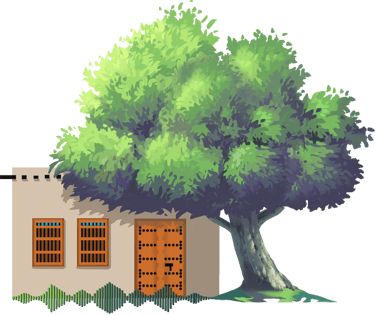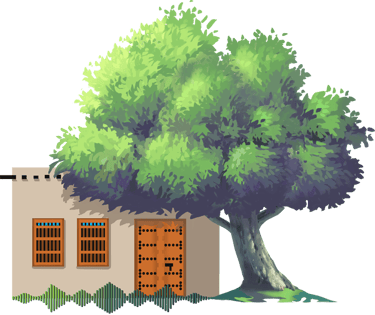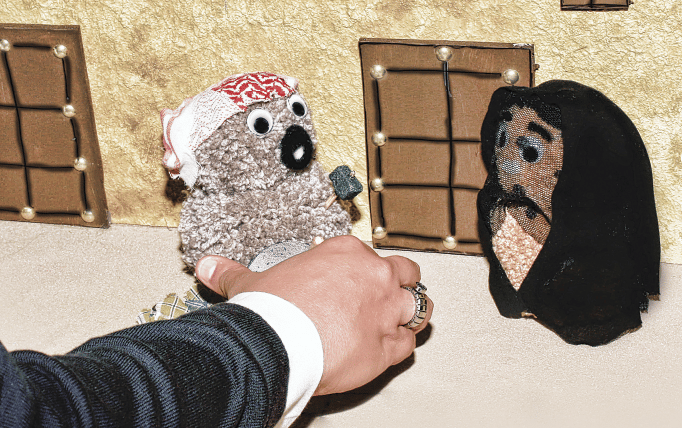Sea Life
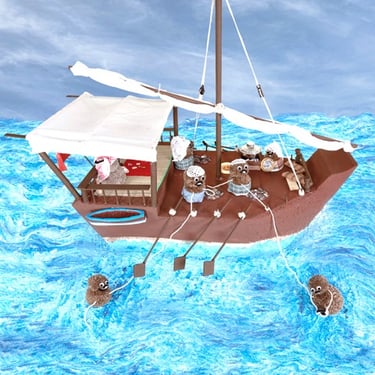

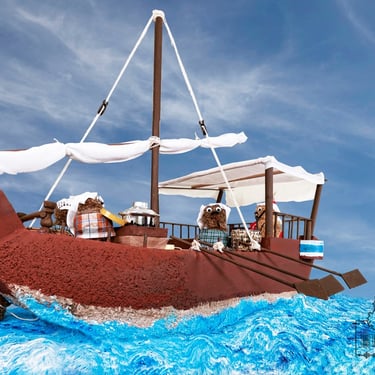
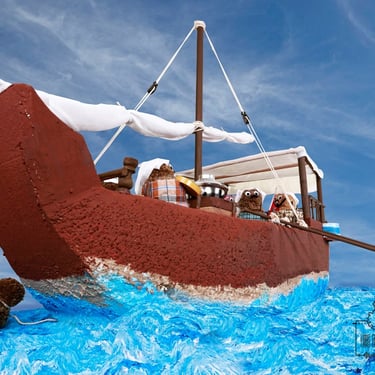
Divers - Seeb
Diving
Diving is one of the professions our ancestors practiced in Kuwait. It was their sole source of livelihood and income in the past. Diving is a tiring profession and poses many risks to those who work in it, whether diving or sailing. Working in this profession requires high physical fitness and courage. Many people may seek this profession, but sometimes they are unable to endure the task and flee when they reach land.
There are four types of diving in the past, only one of which is subject to diving laws. These are as follows:
1. Al-Khanjiya: Al-Khanjiya diving is the first type of diving, occurring at the end of spring, in April. Their ships are close to the coast and are few in number in the nearby "Al-Adan Diving Sites." Al-Khanjiya diving is not subject to diving laws. 2. Diving: This is a well-known type of diving, used by both large and small vessels. Large vessels go to distant dive sites, while small vessels go to the lahars close to the coast. This type of diving is subject to diving laws.
3. Radda: This means returning to diving again. It occurs after the diving season ends in September. Radda occurs in October, when the sea is cold. This type of diving is similar to Khanjiya diving, the first stage of diving. The number of vessels that go for Radda diving is small, and most are small.
4. Irdeeda: This type of diving occurs in November, when the waters are extremely cold. It is located close to the coast and lasts for a short period. It is not subject to diving laws.
In Khanjiya, Radda, and Irdeeda diving, the diver's share is reserved for the diver, and the captains do not receive any fees.
Preparing for Diving
The people of Kuwait in the past prepared for diving. Before each diving season, the diver would register with the captains they wished to join. The captain would lend the sailors a sum prior to the "dasha" (dishah) according to the amount of the loan set by the government. The diver would then take the loan and give the money to his family to spend during his absence. The diver and the sailors would then purchase the necessary diving equipment, as follows:
1. The fatam (plural: "fatam"): A small piece of shell made from turtle bones. The diver wears it on his nose to prevent water from seeping in. The diver would then bring it with him.
2. The dinn (plural: "dayayin"): A container made of rope (like a basket) and, from a high point, shaped like a wooden bow, used by the diver when he descends to collect oysters. The diver would bring it with him. 3. Al-Khattab: With a fat-ha on the kha', a piece of leather placed on the tips of the diver's fingers to protect the hand from injuries when collecting shellfish, especially certain shells called "fasaqah" (with a kasra on the fa') and other snails. It is used when there are many shellfish at the bottom and the diver brings them with him.
4. Al-Hajar: With a fat-ha on the ha', a piece of lead used by the diver to assist him in descending to the bottom of the sea. The diver brings it with him.
5. Al-Shamshul: With a shadda on the sheen, plural shamashil (with a kasra on the sheen), which are short black shorts worn by divers instead of a loincloth to allow them freedom of movement underwater. It is equivalent to a swimsuit today.
6. Al-Bilāz al-Di'wah: A black garment made of fabric, made in two pieces and similar to a shirt and pants, with long sleeves that cover all parts of the body except the head and feet. It is used to protect against jellyfish strikes. 7. Al-Ida: With a kasra on the hamza, plural: ayadi (with a fatha on the hamza), a long rope used to pull the diver from the seabed. It's 40 to 45 cubits long and is brought with him by the diver. It's also spoken by the people of Al-Qusur (Al-Ajdah) and some Gulf states.
8. Al-Zibel: With a kasra on the zay, a long rope used to pull the diver from the seabed using a rock after the diver reaches the seabed. The diver brings the diver with him.
9. Al-Tartur: With a fatha on the ta, taratir is a long cap or head covering. Bedouins often use it when entering the sea to protect their long hair while diving, placing it on their heads.
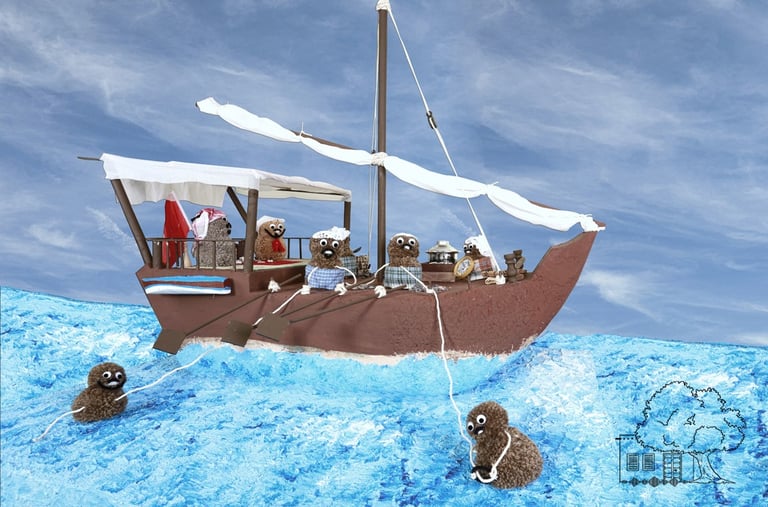



ﺍﻟﻄﻮﺍﺵ ﻭﺍﻟﻨﻮﺧﺬه The Tawash and the Nawkhadha
The Tawashin (with a fatha or shaddah on the taa) was used in ancient times to refer to a pearl merchant. The plural is Tawashin (with a damma on the taa). The Tawashin played a significant role in developing Kuwait's economy in ancient times, leading it to become a center for the pearl trade. After the pearl recession, this profession declined and ceased to exist. Among them were men who played a significant role in Kuwait's history, such as the late Muhammad bin Ali bin Musa bin Asfour, one of the major pearl merchants of the past, during the reign of the fifth ruler of Kuwait. After him came the late Sulaiman Al-Yaqoub, the first ruler of pearl divers in ancient times (Al-Salifa). Then came another generation, including the late Hilal bin Fajhan Al-Mutairi, the late Shamlan bin Ali and his brother, the late Hussein bin Ali, the late Ibrahim bin Mudhaf, the late Abdulrahman bin Yousef Al-Rumi, and many others, may God have mercy on them all.
In ancient Kuwait, there were a large number of men who excelled in this profession, including the great Tawashins and the small Tawashins.
Each diving season, the tawashins prepare to practice their work. They sail in their large private ships to the pearl diving sites (ahirat) in the waters of Kuwait, as well as to the diving sites of Bahrain, Al-Ahsa, and Qatar, and sometimes to the diving sites of Oman. During their journey, they visit Bahrain to buy and sell pearls, visit their tawashin friends, explore the pearl markets in the countries they visit, and stock up on supplies. This is the case for the older tawashins.
The younger tawashins sail to the diving sites in small ships called "challah" (pronounced "challah"), a type of vessel used in ancient times to transport cargo, such as stones from "ashirj" in Kuwait. Sometimes, two or three tawashins share a single ship to save money. The tawashins carry rice, sugar, dates, and other items to sell to the divers at a profit.
Among the most famous of the "Twashins" who sold provisions to the ghaza was the late Issa Al-Qatami, may God have mercy on him. He was joined in this work by the late Sheikh Hafez Wahba, may God have mercy on him, who was of Egyptian origin and a well-known historian who worked as a writer for King Abdulaziz Al Saud, may God have mercy on them. Sheikh Hafez Wahba traded in machines and mentioned his travels in his book "Fifty Years in the Arabian Peninsula." Among the "Twashins" who sold the "Mu'min" was the late Abdullah bin Yaqut. Among the "Small Twashins" were the late Abdullah Al-Farhan, the late Sayyid Muhammad Al-Rifai, the late Abdullah bin Nasser Al-Rawdan, the late Hamoud Al-Rawdan, the late Ibrahim Al-Sayegh, the late Musa Al-Sayegh, and others who sold provisions to the ghaza for cash or for a lock after the lock. - Their trip to buy pearls: The pearl divers travel to buy pearls two months after the divers depart, so that the divers can collect large quantities of pearls. The pearl divers are well-informed about the prices of fabric outside Kuwait. In Bahrain, the pearl center of the Gulf, and in Bombay, the largest pearl trading center in the past, the pearl divers return with a "qafal."
The divers return, and the pearl divers are keen to bring their children with them on their trip so that they can gain experience in this profession and be close to them, so that they can gain experience in the weights, shapes, and types of pearls. Their skills are honed at a young age.
Life on the Tawashin ships: Life on the Tawashin ships was comfortable, as the Tawashin were provided with good, clean food and ate two meals: lunch and dinner. Each Tawashin ship had a cook, and they were keen to have a skilled cook. The condiment was made from fresh fish, in addition to clean, fresh water. They also drank coffee and tea as they pleased. Some Tawashin, especially the elderly, such as the late Shamlan bin Ali Al Saif, may God have mercy on him, would bring a goat with them to milk. The cook would prepare bread for breakfast early in the morning, in addition to the Darbil. Sailors working on tawashi ships: Sailors working on tawashi ships are paid a fixed fee ranging from 100 to 200 rupees, sometimes reaching up to 400 rupees, for the entire duration of the tarsha (trip), also known as a "qatu'a." The wage depends on whether the tawashi is a senior or junior tawashi. The tawashi also pays attention to the good sailors, who are given a tip. On larger ships, there are "mujaddami" and "sukuni." The number of sailors ranges from five to ten, and may reach twenty, depending on the size of the tawashi ship. Sometimes, elderly companions are present on larger ships.
- Sailors' work on tawashi ships: Working on a tawashi ship is similar to working on a larger ship. Most of them work rowing the dhow (qalas). This is tiring work, especially for moving between the pearl diving vessels, cruising around them. When it's lunchtime, they return to their ship. As I mentioned, this is tiring work, especially in the harbors of Bahrain and Oman, while the harbors of Kuwait are close.
Dinner at the Tawash: Many tawashins are keen to invite the nawakhids for lunch, where they are provided with a delicious meal and cold water. The senior tawashins distribute the sacrifices to their fellow nawakhids. Each tawash is linked to a number of nawakhids and divers, whom he pays dirhams (saqim) to travel diving. Senior tawashins pay large sums to the nawakhids. If the nawakhids receive money from the tawash, they are not obligated to sell or keep the pearls for themselves.
Some nawakhids go diving with their own money, without having to ask the tawash for money (advance). Most divers prefer nawakhids who go diving with their own money, as they are free to sell the pearls to whomever they wish among the tawashids. This is known as a "market seller."
- Tawashin Tools: After purchasing the pearls, they are filtered according to their size, color, and roundness. In the past, tawashin used their own equipment in a box consisting of:
- Tawashin: These are circular copper vessels with holes of varying sizes depending on the bowl. They have holes that the tawashin uses to determine the size of the pearls by sifting them from one bowl to another. They are then isolated into equal-sized groups. Then comes the next stage, which is selecting and isolating the best types based on their roundness, color clarity, and quality. If the color is reddish, it is excellent quality. Then comes the white type, then the yellowish type, to a shade of gray. Their prices range from first-class quality and small-sized types.
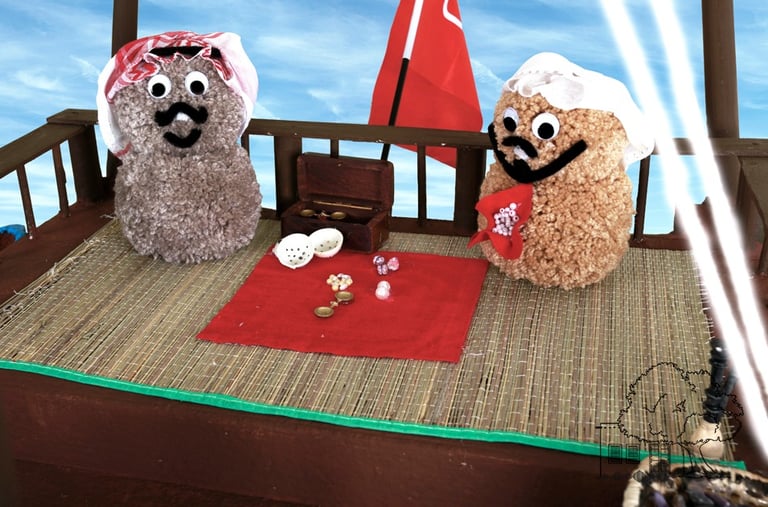


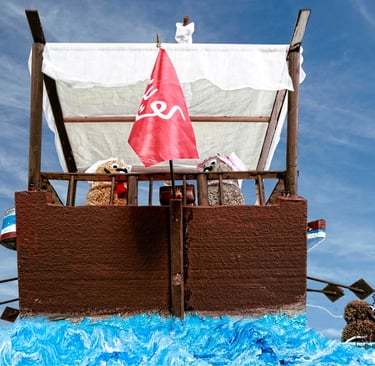
Cook

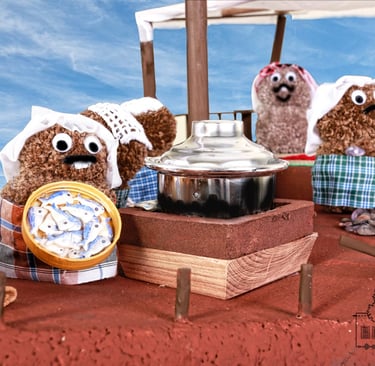
Oyster Splitting
Early in the morning, after diving and collecting the oysters, the diver and her oyster sifters prepare to open the oysters. This is called "Falq al-Mahal." The oysters are loosened with a "muflaqah," a knife used to open the oysters. Everyone works to open the oysters in search of pearls. Sometimes, the oysters are numerous and are placed to one side. The sifters make an opening through which the divers descend into the sea to collect the oysters. If a large quantity is collected, the ship fills up, after which the diver stops diving. This is called "Yahlazoun."


